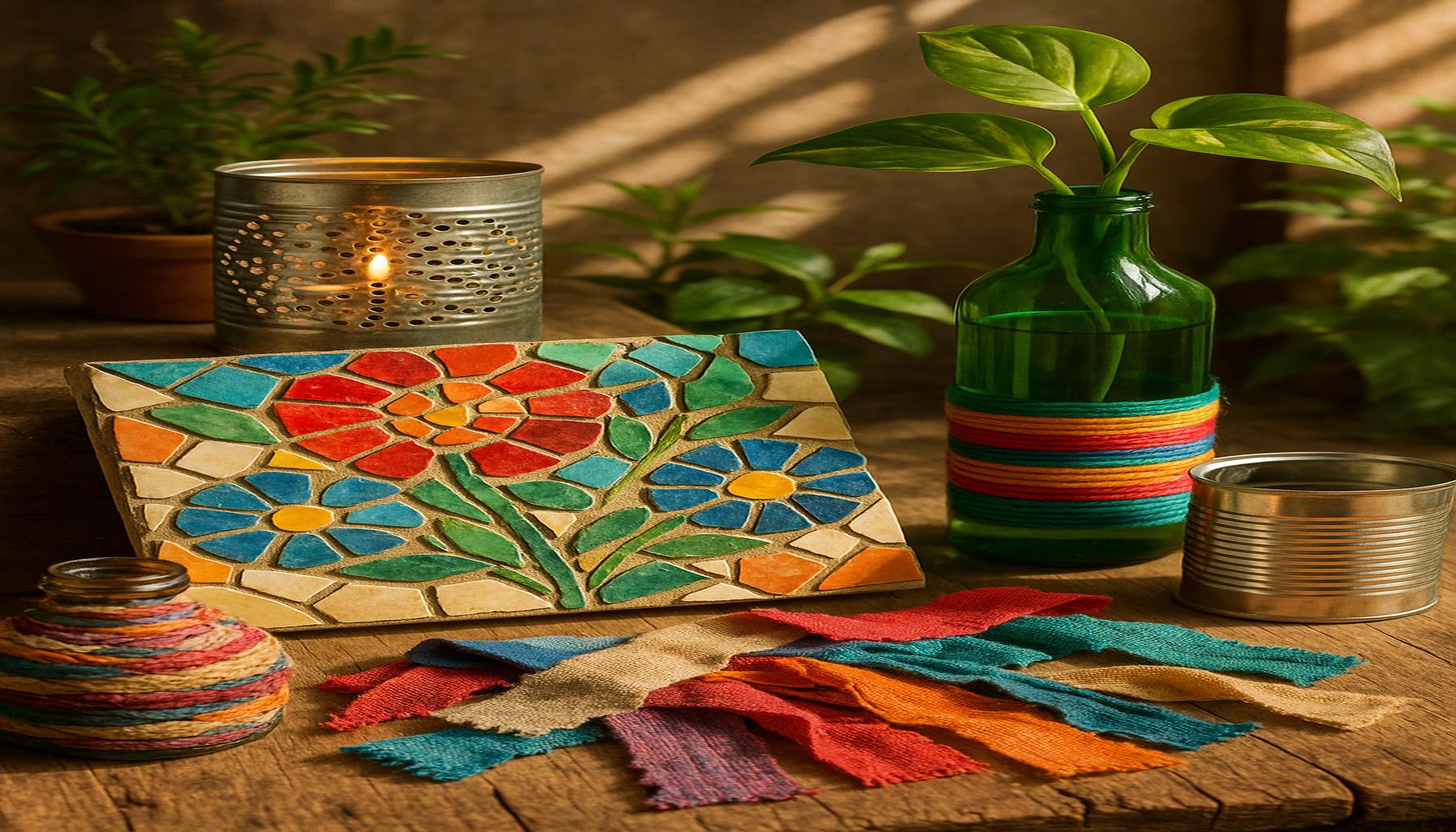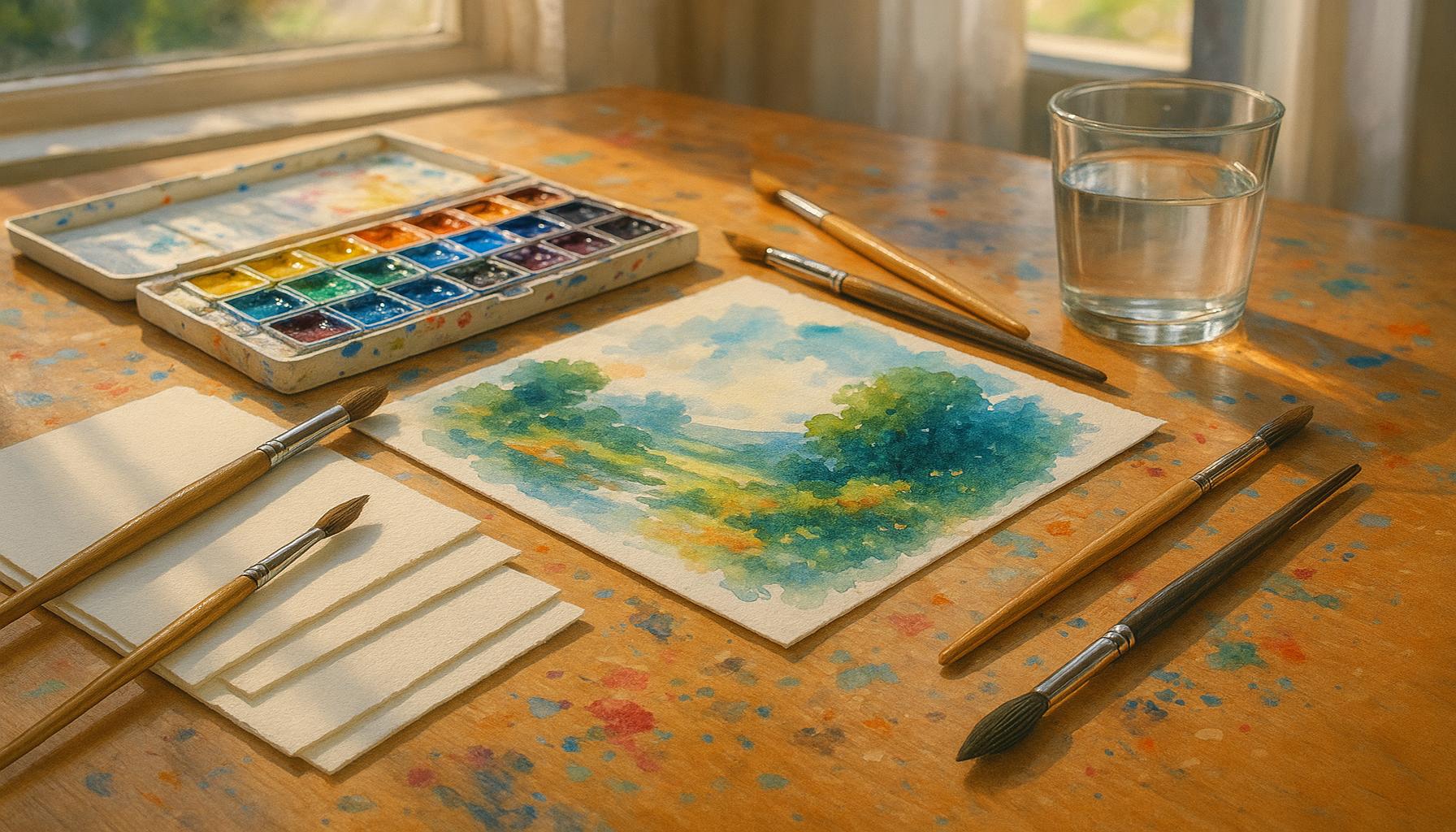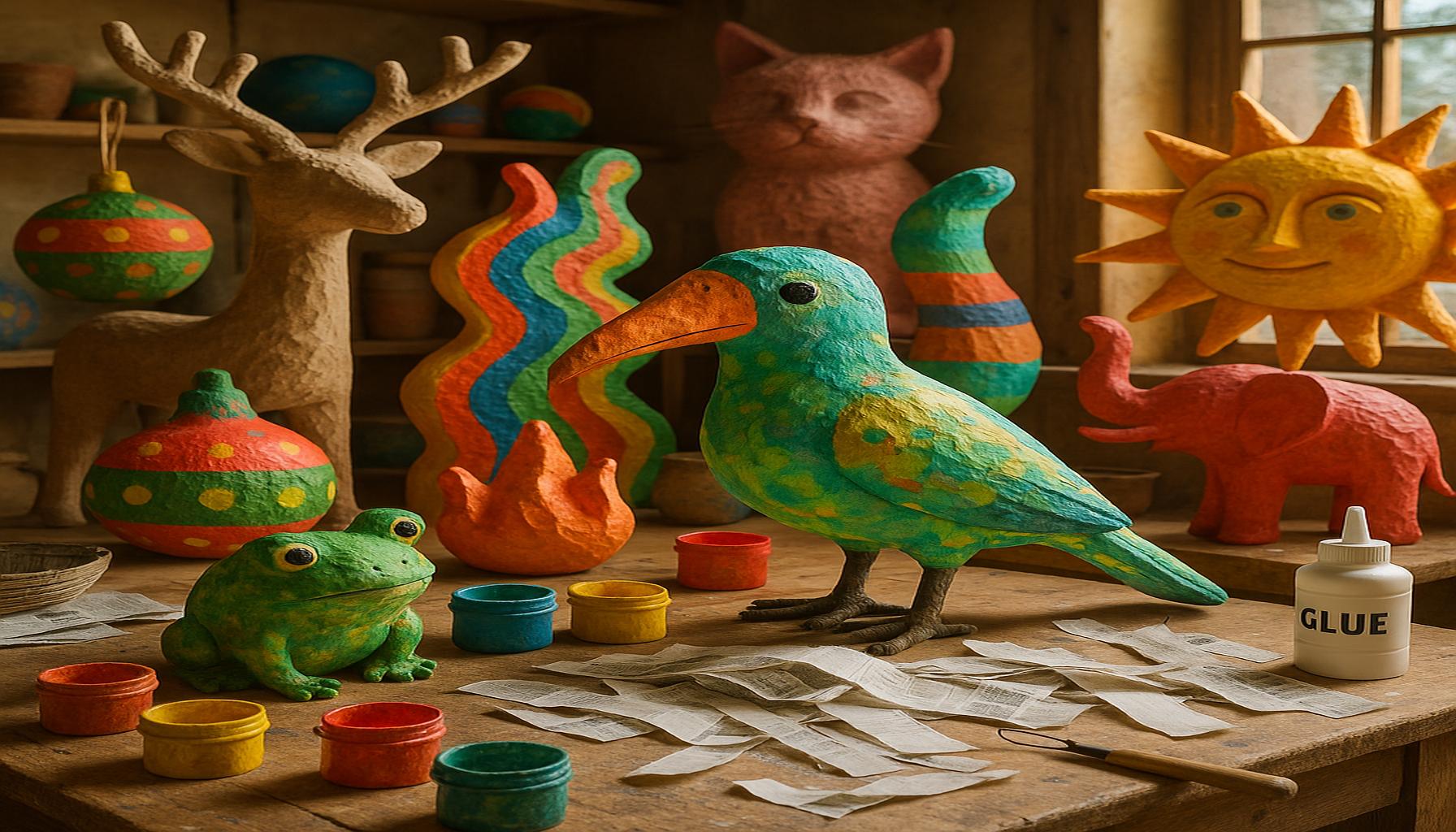Crafting Evolution From Traditional Techniques to Modern Methods
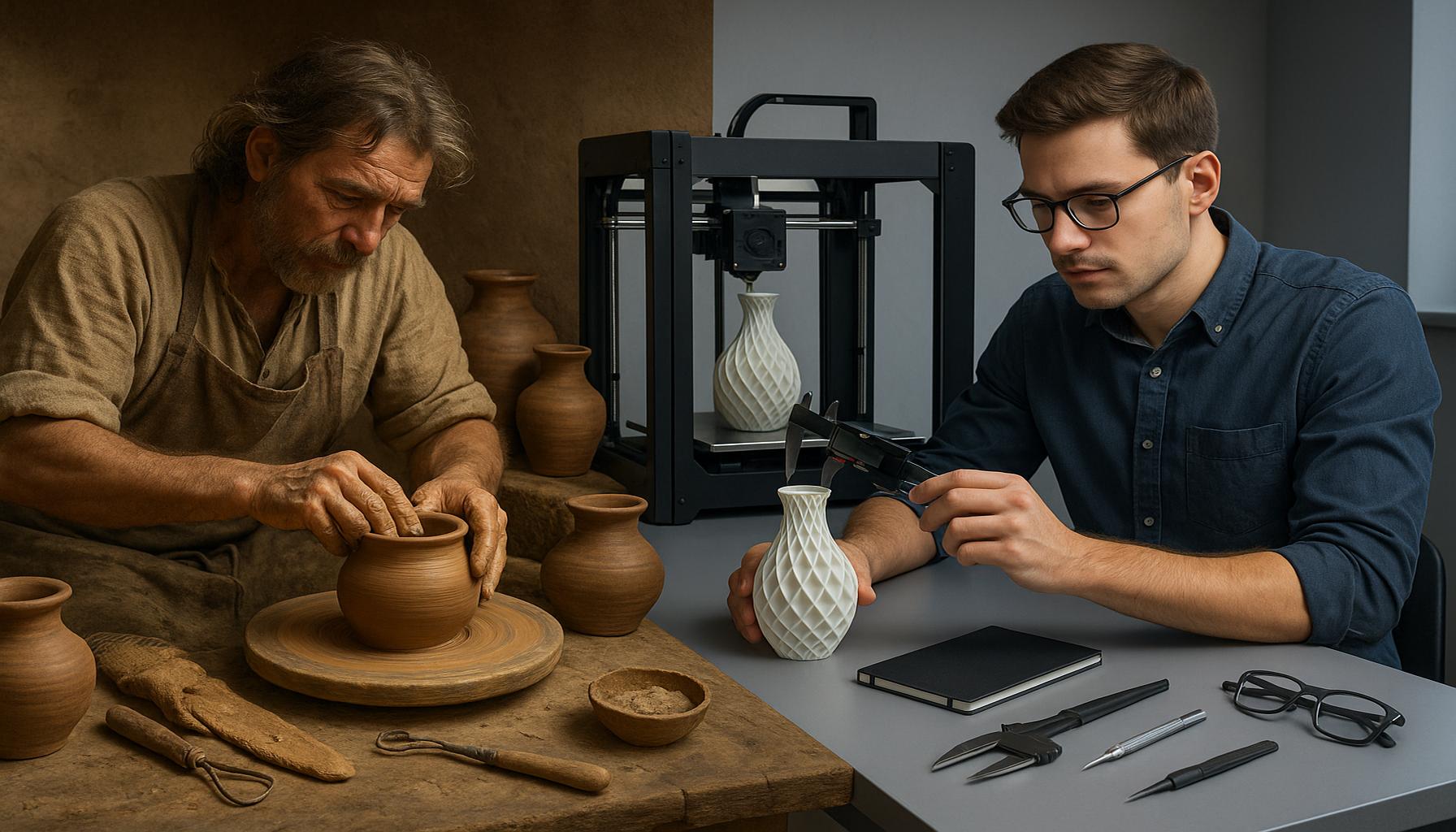
The world of crafting has seen a remarkable transformation over the centuries, evolving from traditional techniques passed down through generations to modern methods that combine technology and innovation. This shift not only reflects changes in society but also highlights the growing importance of creative hobbies in our daily lives. As more individuals seek to express themselves through handmade projects, understanding this evolution is crucial for both enthusiasts and newcomers alike.
In this article, we will explore how craftsmanship has adapted, considering factors such as:
- Historical influences on traditional methods
- The impact of technology on modern crafting
- Current trends in the creative community
- Environmental considerations in crafting practices
Prepare to dive into the Top 5 techniques that highlight this fascinating journey, where each entry showcases a unique aspect of the crafting landscape, bridging the gap between the old and the new.
The Evolution of Craft Techniques: From Traditional to Modern
The world of arts and crafts has undergone significant transformations over the centuries. From ancient traditions passed down through generations to contemporary methods emphasizing technology and innovation, the journey showcases the diversity of human creativity. This article explores the top five evolutions in crafting techniques, celebrating how artisans have adapted and flourished throughout time.
5. Traditional Handcrafting Techniques
At the foundation of the crafting world lie the traditional handcrafting techniques. Passed through countless generations, these methods are characterized by their connection to cultural heritage and community. Crafts such as weaving, pottery, and woodworking rely on techniques honed over time.
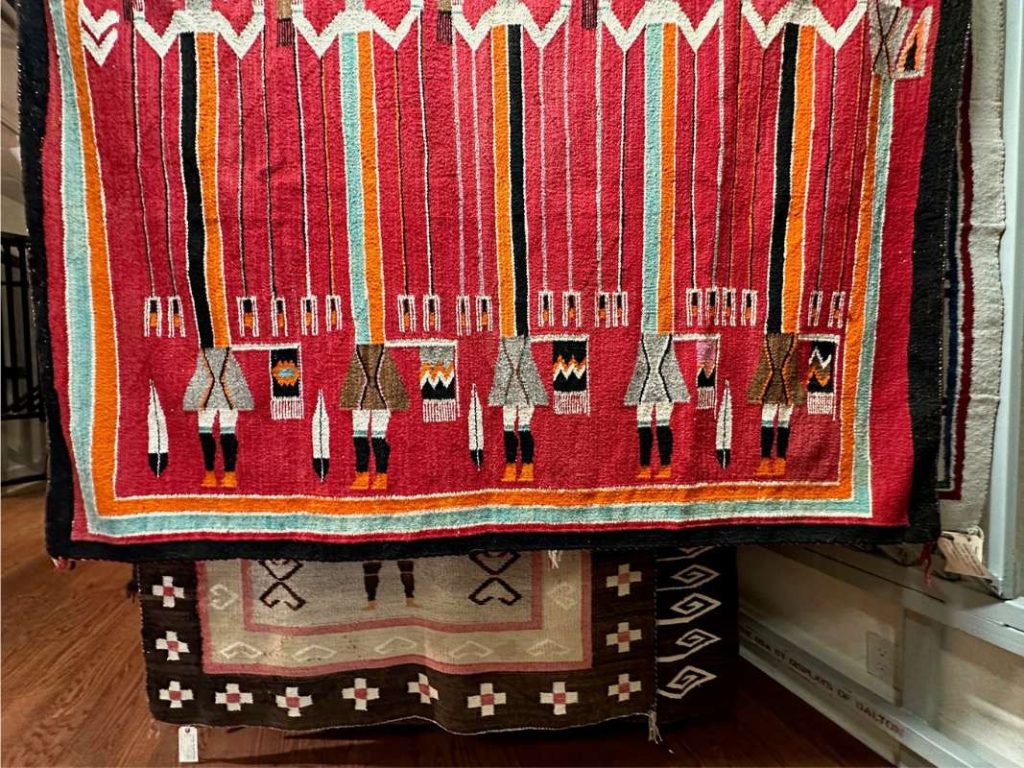
- Weaving: Originating thousands of years ago, weaving was essential for creating textiles and garments. Techniques varied across cultures, from the intricate patterns of Navajo weavers in North America to the complex silk weavings of Oriental traditions. Each style not only served functional needs but conveyed cultural narratives and social status.
- Pottery: The art of shaping clay into both functional and decorative items reflects the practical and aesthetic needs of ancient societies. Pottery shards discovered by archaeologists offer insights into daily life, trade, and customs of bygone civilizations, such as the finely decorated ceramics of Ancient Greece.
- Woodworking: Utilizing trees for tools and structures, woodworking has roots in survival and artistry. Its evolution from basic utility to elaborate furniture crafting is evident in every culture’s history, from the ornate marquetry of French artisans to the simplistic yet sturdy designs of Japanese carpenters.
These traditional techniques maintain a sense of identity and often reflect local customs and resources. While they may seem to be fading in the face of modern technology, they remain crucial to understanding the broader history of arts and crafts. Artisans today often seek to preserve these techniques, using them as a foundation for more contemporary work.
4. The Artisan Revolution
The Artisan Revolution, which surged several decades ago, sparked a renewed interest in handmade goods. Amid the rise of industrialization, many individuals sought authenticity and individuality in their possessions. This period marked a pivotal revival of using handcrafting techniques in personal and professional work.
Factors contributing to this revolution included:
- Increase in consumer awareness: Shoppers began prioritizing quality over quantity and sought unique, handcrafted items. This shift was partly due to growing awareness of working conditions in mass production and a preference for supporting local artisans.
- Sustainability concerns: Handcrafted goods were often seen as more environmentally friendly compared to mass-produced counterparts. The reduced carbon footprint of locally sourced and made items appealed to environmentally conscious consumers.
- Online platforms: E-commerce and social media provided artisans outlets to showcase their creations, finding like-minded communities. Websites like Etsy and Pinterest became integral in promoting the artisan movement by connecting makers with global audiences.
This movement has led to a resurgence of many traditional craft methods, allowing modern artisans to innovate while respecting their roots. The fusion of old and new has created a dynamic marketplace where creativity thrives on historical techniques and modern concepts.
3. Integration of Technology
As technology rapidly advanced in the late 20th and early 21st centuries, its integration into crafting techniques brought forth a wave of innovation. Tools like laser cutters and 3D printers have transformed the creative landscape, allowing for precision and design possibilities that were previously unimaginable.
The benefits of technology in crafts include:
- Precision: Digital tools enable accurate designs upheld by software. Artists can use CAD programs to design intricate patterns that machines can replicate precisely, expanding beyond the limits of manual dexterity.
- Scalability: Crafts can be produced in larger quantities while maintaining quality. This is beneficial for artisans who want to reach more consumers without compromising on craftsmanship.
- Accessibility: People can easily access tutorials and digital resources to learn crafts. Platforms like YouTube offer countless guides and inspiration, allowing aspiring crafters to learn from experts worldwide.
However, this integration has sparked debates amongst purists and modernizers regarding the authenticity of crafted items. It raises questions about what constitutes art when technology is at play. While some argue that this diminishes craftsmanship, others see it as an evolution that can coexist with traditional methods.
2. Mixed Media and Multidisciplinary Approaches
Another significant evolution in crafting techniques has been the rise of mixed media art and multidisciplinary approaches. Artists are now blending a variety of materials and forms, breaking conventional boundaries to produce innovative creations. This trend reflects a more globalized culture where influences from numerous sources converge.
These approaches allow artists to infuse their work with numerous elements, including:
- Textiles: Fabrics can be combined with paints, metals, or plastics. This allows for unique textures and contrasts, challenging viewers’ perceptions and expanding the functional boundaries of textiles.
- Digital components: Artists now incorporate digital images or projections into their craft. This combination broadens the thematic possibilities of works and often engages viewers in interactive experiences.
- Found objects: Unconventional items, such as discarded materials, are increasingly used in artistic expression. This practice encourages sustainability and prompts discussions on consumerism and waste.
This trend signifies a bold move away from traditional confines, challenging perceptions and encouraging creativity. Mixed media art offers endless possibilities, making it an exciting field where experimentation leads to groundbreaking results.
1. Artisanship in Contemporary Culture
The pinnacle of the evolution of craft techniques is the recognition of artisanship within contemporary culture. Today’s craftsmen often blend traditional techniques with modern sensibilities, resulting in innovative designs that resonate in today’s world. The modern artisan aims not only to create but also to tell stories, evoke emotions, and challenge social norms.
The current trend emphasizes:
- Personalization: Customized craft items cater to individual preferences. This aspect highlights the importance of the personal connection between the artisan and the consumer, often resulting in unique and meaningful products.
- Storytelling: Artisans use their craft to express personal narratives or comment on social issues. Craft becomes a medium to address themes ranging from cultural heritage to contemporary environmental challenges.
- Community engagement: Many artisans are dedicated to fostering community through collaborative projects and workshops. These interactions not only preserve traditional techniques but also inspire the next generation of makers.
Artisans today navigate a complex landscape where their role is redefined by changing consumer expectations and technological advancements. By embracing both traditional and contemporary elements, they carve a space that respects history while pushing the boundaries of creativity.
As we delve deeper into the evolution of crafting techniques, it becomes increasingly evident that artisans have continuously blended tradition with modernity, leading to an impressive array of crafts that appeals to varied tastes and preferences. This section explores the transformations in craftsmanship, the integration of new technologies, and the implications for both artisans and consumers.The first notable shift in crafting techniques began with the advent of the **Industrial Revolution**, which revolutionized the way goods were produced. Mass production led to the development of products that were accessible to a larger audience, but it also posed challenges for traditional artisans who faced competition from cheaper, machine-made items. In response to this, the handicraft movement emerged in the late 19th century. Emphasizing the value of handmade items, artisans started to reclaim their place in the market by showcasing the uniqueness and quality of their work. This led to a renewed appreciation for traditional techniques, such as hand-weaving, pottery, and woodworking, which are celebrated for their craftsmanship and artistry.Meanwhile, the **Digital Age** has opened new avenues for the crafting community, enabling artisans to leverage technology in transformative ways. Today, many craftspeople utilize computer-aided design (CAD) software to create detailed patterns and prototypes that were once only achievable by hand. Moreover, the rise of online platforms has made it easier than ever for artisans to reach global markets. Platforms like Etsy and social media channels allow for wider exposure, allowing creators to showcase their crafts to a diverse audience. They can interact with potential buyers, share their process through blogs or videos, and build meaningful connections that foster long-term support for their crafts.As the crafting landscape evolves, sustainability has also emerged as a significant focus. Artisans are increasingly turning to eco-friendly materials and sustainable practices in response to consumers’ growing emphasis on environmental consciousness. Techniques such as natural dyeing, upcycling, and the use of organic materials are becoming more prevalent. Innovations in creating products with minimal waste not only appeal to socially responsible consumers but also ensure that traditional practices are adapted for the modern marketplace. This shift offers the potential for a positive impact on the environment while preserving cultural heritage.In sum, the evolution of crafting techniques from traditional practices to modern methodologies illustrates a dynamic field that thrives amidst change. It combines age-old skills with contemporary innovations, responding to market demands while promoting sustainability. As these transformations continue, the future of crafting is rich with possibility, inviting both artisans and consumers to explore the intricate balance between the past and present in their creative endeavors. To encapsulate the varied advantages of this evolution, the table below summarizes the key categories associated with these changes:
| Category | Key Features | Advantages | Disadvantages | Beneficiaries |
|---|---|---|---|---|
| Revival of Traditional Techniques | Emphasis on handmade, culturally significant methods | Promotes cultural heritage and skills preservation | May struggle against mass-produced alternatives | Artisans and traditionalists seeking to preserve heritage |
| Technological Integration | Use of CAD and online platforms for production and sales | Increases efficiency and expands market reach | Dependence on technology might alienate traditionalists | Modern artisans and tech-savvy creators |
| Sustainability in Crafting | Focus on eco-friendly materials and reducing waste | Promotes environmental responsibility and ethical practices | Higher costs of sustainable materials may deter some buyers | Eco-conscious consumers and artisans prioritizing sustainability |
| Community Engagement | Collaboration between artisans and local communities | Builds strong networks and increases local support | Can lead to competition between community members | Local artisans and community organizers |
Frequently Asked Questions About the Evolution of Craft Techniques
What are some traditional crafts that have influenced modern techniques?
The roots of modern craft techniques often trace back to ancient practices. Crafts such as weaving, pottery, and embroidery have profoundly influenced contemporary methods. For example, traditional weaving techniques from various cultures have led to innovative textile designs using modern materials and digital technology. These time-honored crafts serve as a foundation on which new, cutting-edge techniques are built, blending history and innovation.
How has technology impacted the field of modern craftsmanship?
Technology has significantly transformed craftsmanship by introducing new tools and methods that boost both creativity and efficiency. The advent of digital platforms allows artisans to showcase their work globally. Moreover, 3D printing and laser cutting provide precision and open up possibilities for intricate designs that were previously difficult to achieve by hand. This technological fusion is redefining the boundaries of what is considered possible in the craft world.
Can traditional and modern techniques coexist in today’s craft industry?
Absolutely, traditional and modern techniques not only coexist but often complement each other in contemporary crafts. Many artisans incorporate traditional motifs and methods into their modern pieces, creating a hybrid art form that honors the past while embracing the future. This synergy fosters a diverse and rich craft culture that appeals to a broad audience seeking both authenticity and innovation.
What challenges do modern artisans face in preserving traditional craftsmanship?
Modern artisans face the challenge of maintaining the authenticity and integrity of traditional crafts while adapting to contemporary tastes and demands. Issues such as mass production, loss of indigenous knowledge, and inadequate support for traditional craft communities threaten the preservation of these practices. There’s a growing need for initiatives that promote education and awareness, helping artisans balance heritage with modernity.
How can consumers support the evolution of craft techniques?
Consumers can play a crucial role by supporting artisans and ethical brands that champion both traditional and modern craft techniques. This includes purchasing handmade goods, being informed about the origin of products, and advocating for sustainable practices. By valuing craftsmanship over mass production, consumers contribute to the preservation and evolution of these vital cultural expressions.
Conclusion
The evolution of craft techniques from traditional methods to modern approaches not only reflects the adaptability of creative expressions but also underscores the enduring appeal of handmade art. This journey from age-old practices to contemporary innovations highlights the intricate tapestry of human creativity and resilience. The traditional techniques, honed through generations, laid a firm foundation characterized by meticulous craftsmanship and a deep respect for cultural heritage. These methods, steeped in history, are more than mere skills; they are vessels carrying stories and traditions through time.
As technology advanced, so too did the craft sector, integrating modern tools and novel materials. This shift brought about a transformation that expanded possibilities within the craft world, offering artisans new avenues for expression while maintaining a connection to their roots. The amalgamation of traditional skills with modern technology underscores the versatility and innovation that craftwork embodies today. The integration of digital design, 3D printing, and sustainable materials has propelled craft into a realm where boundaries are continually pushed.
The significance of this evolution in creative hobbies is immense. It not only opens up a treasure trove of opportunities for artisans but also invites enthusiasts and consumers to engage with craft on a deeper level. As individuals seek meaningful pursuits outside the digital domain, craft provides an enriching outlet for creativity and self-expression. The resurgence of interest in handmade and sustainable products signals a renaissance of sorts, where the past informs the future, and where the traditional and modern coexist harmoniously.
In essence, the narrative of craft evolution serves as a reminder of the endless possibilities that creativity offers. It encourages embracing change while cherishing tradition, inviting both artisans and observers to delve deeper into this fascinating world and explore the remarkable intersections of past and present.

